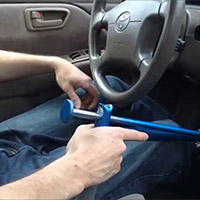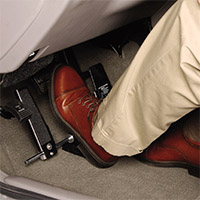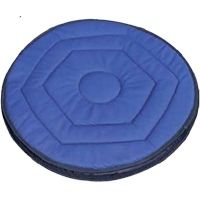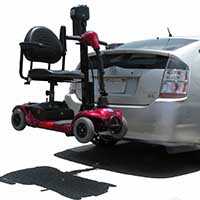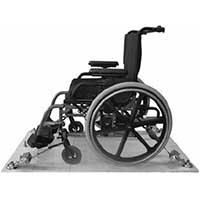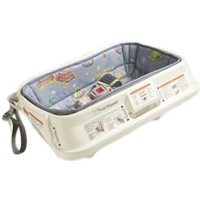 What is Vehicle Modifications Assistive Technology? Assistive technology for vehicle modifications includes ramps, hand controls for braking and accelerating, modified steering controls, adjustable driver’s seats, and automatic door openers.
What is Vehicle Modifications Assistive Technology? Assistive technology for vehicle modifications includes ramps, hand controls for braking and accelerating, modified steering controls, adjustable driver’s seats, and automatic door openers.
When do I need to use them? Where and when do I need to use Vehicle Modifications Assistive Technology – Vehicle modifications options are available on almost any vehicle. The type and severity of disability and whether you are riding or driving will determine if your vehicle can accommodate the needed modification.
Who needs Vehicle Modifications AT? People who have upper body and/or lower limitations in strength, range of motion, and/or coordination may need vehicle modifications to drive. Anyone who needs to access their vehicle from a wheelchair will need vehicle modifications.
Why are Vehicle Modifications important? Having a vehicle and being able to drive means greater independence. However, people with physical disabilities are often not able to drive a vehicle and families with a family member who has a disability can be limited in transporting that family member. Having a vehicle with modifications can make a difference in people with disabilities being able to ride in and/or drive a vehicle safely.
Resources for Vehicle Modifications
AT3 Center Videos on Vehicle Modifications
Below, you'll find videos explaining assistive technology directly related to Vehicle Modifications. Click the graphic to see a video on the Car Caddie (provided by AT3 Center). Then, we're including two more videos from other providers: the Swivel Seat (agecomfort.com) and How to: Drive with a Physical Disability (National Center on Health, Physical Activity and Disability).
EasterSeals Crossroads -
INDATAProject TechTip Videos
Easter Seals Crossroads has been providing assistive technology solutions in Indiana since 1979. In 2007, Easter Seals Crossroads partnered with the State of Indiana, Bureau of Rehabilitative Services to establish the Indiana Assistive Technology Act (INDATA) Project. The INDATA Project offers excellent videos and Podcasts that provide timely updates on new assistive technology.
Here's INDATA's YouTube video playlist for Tech Tips for Driving.
INDATA also offers three Podcasts that you can listen to, or subscribe to, on this page. At the top right of any of these pages you can search for a specific disability category.
The AT3Center.net wishes to thank the INDATA Project for their expertise and excellence in advancing access and awareness of assistive technology.
Information on this page addresses Assistive Technology for people with Vehicle Modifications disabilities in...
EDUCATION | EMPLOYMENT | COMMUNITY LIVING
(click the titles above to jump to the content area)
EDUCATION

Talking Points for Vehicle Modifications Technology in Education
Benefits of Vehicle Modification AT: A child with a disability is eligible, if the team determines it is appropriate, to receive transportation to and from school. This may require a bus with appropriate equipment such as ramps, lifts, and tie-downs. By providing this assistive technology a child is afforded a trip to school the same way many other children arrive at school!
Challenges of Vehicle Modification AT: Because of the time involved in loading and unloading a child in a wheelchair, the child may have to be picked up earlier and/or may arrive home later than non-disabled peers.
Commonly Asked Questions for a Student Who Has Vehicle Modifications AT
Q - How is a child in a wheelchair secured in a school bus?
A - The bus is required to have special hooks, called tie-downs, bolted into the floor. These hooks attach to the frame of the wheelchair. In the event of an accident the tie-downs act as “seatbelt” for the wheelchair.
Q - But how is the child secured?
A - The child will need to be secured into the wheelchair. This is usually through an X-harness. He or she should also have a forehead strap to stabilize the head and neck. A child’s physician, occupational therapist, physical therapist, and/or Assistive Technology Professional/Seating and Mobility Specialist should be involved in these decisions.
Q - Does a child who uses a wheelchair have to ride the bus or can the parent choose to take the child in their personal vehicle?
A - The parent can absolutely choose to take the child to school. However, the school may not require the parent to provide the transportation. If the school does not have appropriate transportation to meet the needs of the child, the school may contract and pay another provider to do so. This provider could potentially be the parent. If this is the arrangement the details should be outlined in the IEP.
Q - My child has mobility limitations but is not yet using a wheelchair. We use a special stroller. Can the stroller be tied-down in the bus?
A - Instead of tying down the stroller, which most likely does not have a strong enough frame to withstand an accident, the child should be placed in a special bus booster seat or in a car seat that is belted into a regular bus seat. There are car seats available for children with special needs.
Solutions for Students with Vehicle Modifications Needs
(click to open the accordions below)
| Helpful Links & PDF Resources |
|---|
| Christopher & Dana Reeve Foundation - This webpage provides information on driving evaluations and selecting a vehicle as well as other resources on driving with a disability. |
| American Occupational Therapy Association - This webpage offers information on driving and community mobility with a link to locate driver specialists in your area. |
Talking Points for Vehicle Modifications Assistive Technology in Employment
The category of Employment encompasses those people of working-age who are currently employed or who are seeking employment. The following talking points may be applicable to individuals with disabilities as well as employers. When matching a person to a piece of assistive technology, one can use the Human Activity Assistive Technology (HAAT) model. This model has been used below in the sample case studies.
For students transitioning into the community or employment settings upon high school graduation - To ensure successful AT transitions for students aging out of school services, it is important for any AT the student is currently using or may need to pursue employment outcomes, whether written into the child's Individualized Education Program (IEP) or not, be incorporated into the student's Individualized Plan for Employment (IPE). IPEs are developed through collaboration with the state vocational rehabilitation agency using a Vocational Rehabilitation (VR) Counselor.
Situations where an individual might need assistive technology for Vehicle Modifications
Work Environment
- Off-site meetings
- Off-site trainings
Socialization
- Off-site work lunches
Community
- Errands
- Transportation to and from work
Commonly Asked Questions for an Individual Who Needs Assistive Technology for Vehicle Modifications
Q - What laws allow me to ask my employer for assistive technology?
A - There are several laws that require employers to accommodate and provide assistive technology as a reasonable accommodation, including the Americans with Disability Act and Section 504 of the Rehabilitation Act.
Q - I am a qualified person with a disability under the ADA. I need assistive technology to do my job. May I ask my employer to provide it?
A - Yes. The ADA says that one of the ways your employer can provide a reasonable accommodation to you is by providing new equipment or modifying existing office equipment or assistive technology to perform the essential functions of your job (core duties). 29 C.F.R. § 1630.2(o)(2)(ii). On the other hand, tasks that are marginal (non-essential functions) to the work you do, do not require that your employer provide you with a reasonable accommodation. 29 C.F.R. 1630(n)(1). Your request must not impose an undue hardship on the employer. 29 C.F.R. §§ 1630.2(p), 1630.15(d).
Q - When can I ask for an assistive device?
A - Your right to assistive technology is available at all stages of a job including application and employment. 29 C.F.R. § 1630.2(o)(1).
Q - What types of assistive technology can I ask for?
A - The ADA does not limit the type of equipment you can ask for. Anything that helps you do your work may be a reasonable accommodation. It may be a simple tool such as a one-handed typewriter for a person who can only use one hand or a high-tech device such as specially manufactured communication equipment that allows a person with a speech impairment to communicate.
Q - What do I need to do to get the right assistive device for work?
A - The process begins with letting your employer know that you have a disability and need an assistive technology to do your work. Next, you should ask for a meeting to discuss your specific needs. If you or your employer know enough about assistive technology, you can agree upon what meets your needs. You should document the contents of your discussion and the terms of your agreement.
Your employer is not required to purchase the most expensive or the most recently developed equipment. In fact, your employer does not have to purchase anything if your needs can be met some other way. Your employer cannot rely on the cost of an item as a reason to do nothing unless there are no other alternatives and the employer can show the cost will be an undue hardship. Instead, when one option is ruled out, the employer should consider other reasonable alternatives. If there is no reasonable choice because devices are all too costly for example, you should be given the chance to provide it yourself.
Q - What can I do if my employer denies my request for assistive technology?
A - You may file a complaint with an agency and a lawsuit in court. In most situations you must file a complaint first before you can go to court.
Solutions for Individuals with Vehicle Modifications Impairment or Needs
(click to open the accordions below)
COMMUNITY LIVING
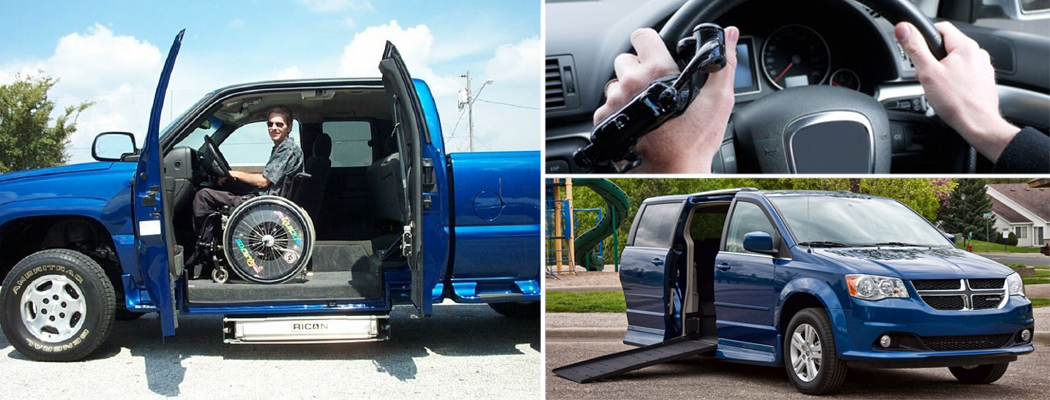
Talking Points for Assistive Technology for Vehicle Modifications in Community Living
The category of Community Living encompasses infants and toddlers who are under the age of 3 and not yet in school, those people who were born with or have acquired an injury and are otherwise participating in community activities (not as students or employees) as well as those who are aging in the home. The following talking points are applicable to individuals with disabilities as well as family members and others providing support and care to these individuals with disabilities.
Sometimes an individual will make it to adulthood and have the necessary assistive technology to participate in the community and at home. When that is the case, these pages will show other considerations regarding accessibility and accommodations. When the person requires additional tools to participate, the Human Activity Assistive Technology (HAAT) model will be used to show how an individual might best match up with a piece of AT to be used in the community and at home
For those children transitioning into the public school at age 3 - To ensure successful AT transitions for children turning 3 years old, it is important for any AT the child is currently using or may need to use in school, whether written into the child's Individual Family Service Plan (IFSP) or not, be incorporated into the child's Individualized Education Program (IEP).
Link to Education section
Situations where an individual might need assistive technology for Vehicle Modifications
Socialization
- Eating out
- Meeting friends
Community
- Doctor's office visits
- Hospital
- Shopping
- Transportation to, and from, events
- Volunteer activities
- Entertainment
- Sports
- Library
- Church
Solutions for Individuals with Vehicle Modification Loss - Impairment - Needs
(click to open the accordions below)
| Helpful Links & PDF Resources |
|---|
| MedicalEShop |
| Adaptive Mall |

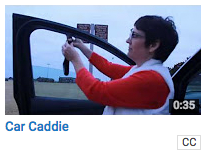
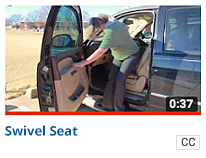
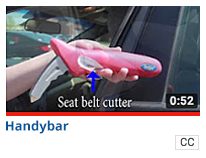

 Student with Down syndrome is in a 3-year-old Developmentally Delayed Preschool Program.
Student with Down syndrome is in a 3-year-old Developmentally Delayed Preschool Program.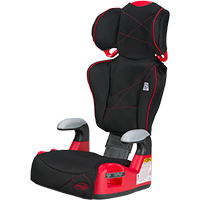
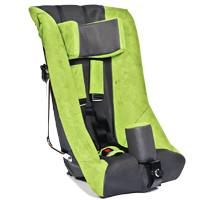
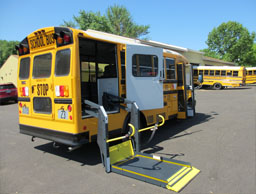 The student has a high-level spinal cord injury and has no movement below the chin. The student uses a wheelchair with a 5-point chest and waist harness. He does not have a head strap as his wheelchair is slightly reclined at all times and his head rests in a head support.
The student has a high-level spinal cord injury and has no movement below the chin. The student uses a wheelchair with a 5-point chest and waist harness. He does not have a head strap as his wheelchair is slightly reclined at all times and his head rests in a head support.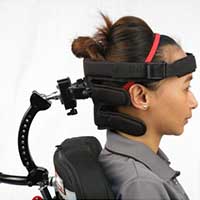


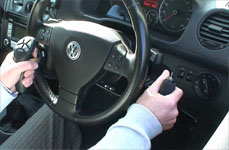 This student has decreased range of motion and endurance in her upper extremities making it difficult to turn a steering wheel in the typical hand-over-hand method. She is able to control brake and accelerator with her lower extremities. She is able to reach the signals and other controls on the dash but decreased hand dexterity should be considered during her driving evaluation.
This student has decreased range of motion and endurance in her upper extremities making it difficult to turn a steering wheel in the typical hand-over-hand method. She is able to control brake and accelerator with her lower extremities. She is able to reach the signals and other controls on the dash but decreased hand dexterity should be considered during her driving evaluation.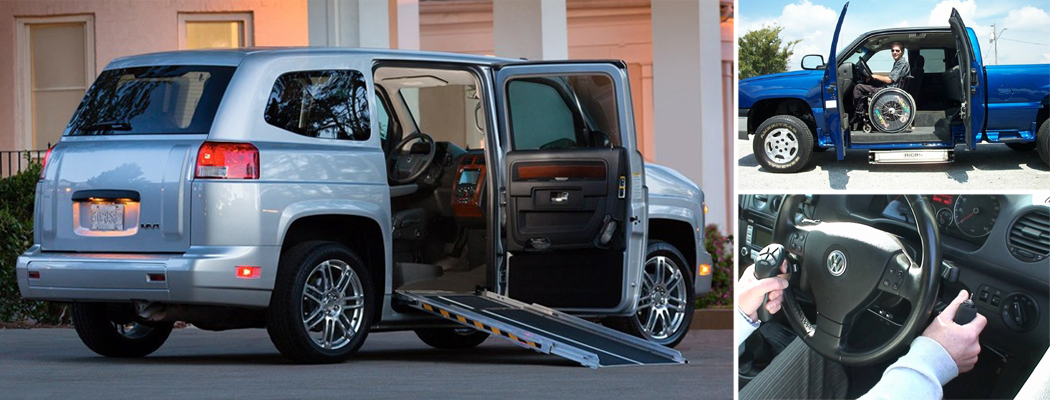
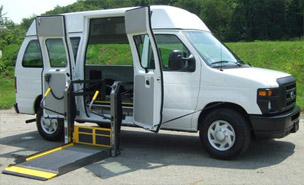 Due to safety issues related to vehicle modifications, no-tech solutions are not advised. Any vehicle modifications should be completed by an experienced and reputable dealer.
Due to safety issues related to vehicle modifications, no-tech solutions are not advised. Any vehicle modifications should be completed by an experienced and reputable dealer.
